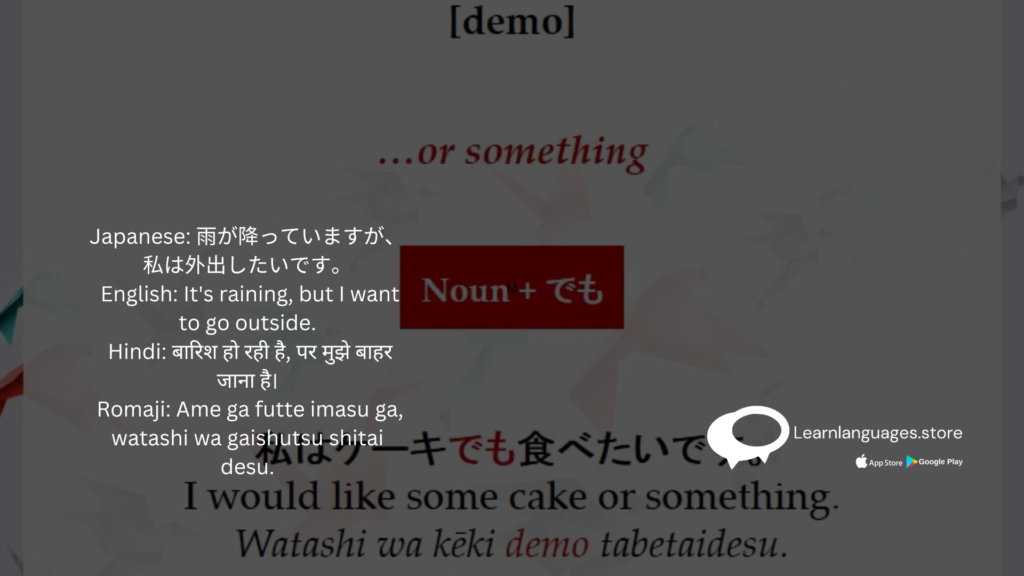Mastering “でも” (Demo): Understanding the nuances of “But” in Japanese Grammar
Mastering “でも” (Demo): Understanding the nuances of “But” in Japanese Grammar
Estimated reading time: 3 minutes

Introduction:
Welcome to our fascinating exploration of Japanese grammar! Today, we delve into the multifaceted world of “でも” (demo), a versatile conjunction that adds depth and complexity to Japanese sentences.
What is “でも” (Demo)?
“でも” (demo) is a conjunction in Japanese that is commonly used to express contrast or contradiction, similar to the English word “but.” It connects two clauses or sentences, indicating that the second clause contrasts with or contradicts the first.
Examples:
- Japanese: 雨が降っていますが、私は外出したいです。
English: It’s raining, but I want to go outside.
Hindi: बारिश हो रही है, पर मुझे बाहर जाना है।
Romaji: Ame ga futte imasu ga, watashi wa gaishutsu shitai desu. - Japanese: 彼は忙しいですが、いつも時間を見つけて勉強します。
English: He’s busy, but he always finds time to study.
Hindi: वह व्यस्त है, पर वह हमेशा पढ़ाई के लिए समय निकालता है।
Romaji: Kare wa isogashii desu ga, itsumo jikan o mitsukete benkyō shimasu.
Sentence Structure: In Japanese, “でも” (demo) is placed between the two clauses it connects. The first clause is followed by “が” (ga), indicating a contrast, and then “でも” (demo) before the second clause. This structure highlights the contradiction or contrast between the two clauses.
Exceptions and Usage:
- “でも” (demo) can also be used at the beginning of a sentence to express concession or hesitation, similar to the English “Well…”
- It is often used in casual conversations and written texts to express differing opinions, unexpected outcomes, or concessions.
Conclusion: In conclusion, “でも” (demo) is a fundamental conjunction in Japanese grammar that plays a crucial role in expressing contrast, contradiction, or concession in sentences. By mastering its usage and understanding its nuances, learners can enhance their proficiency in Japanese communication.
By incorporating “でも” (demo) into your language repertoire, you can add depth and complexity to your Japanese conversations, making them more natural and expressive.
-
Product on sale
 Japanese N4
Japanese N4₹18,300.00
₹24,300.00 -
Product on sale
 Japanese N5
Japanese N5₹16,300.00
₹18,300.00
Learn Languages Store
Vashi,
Email: services@learnlanguages.store










